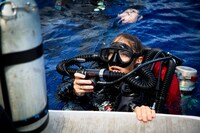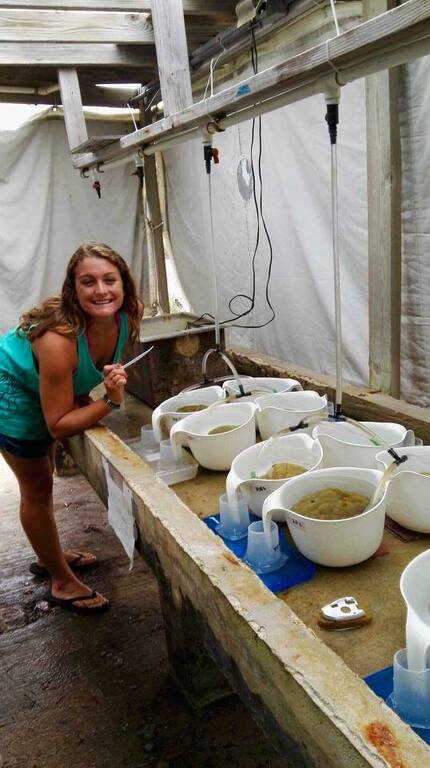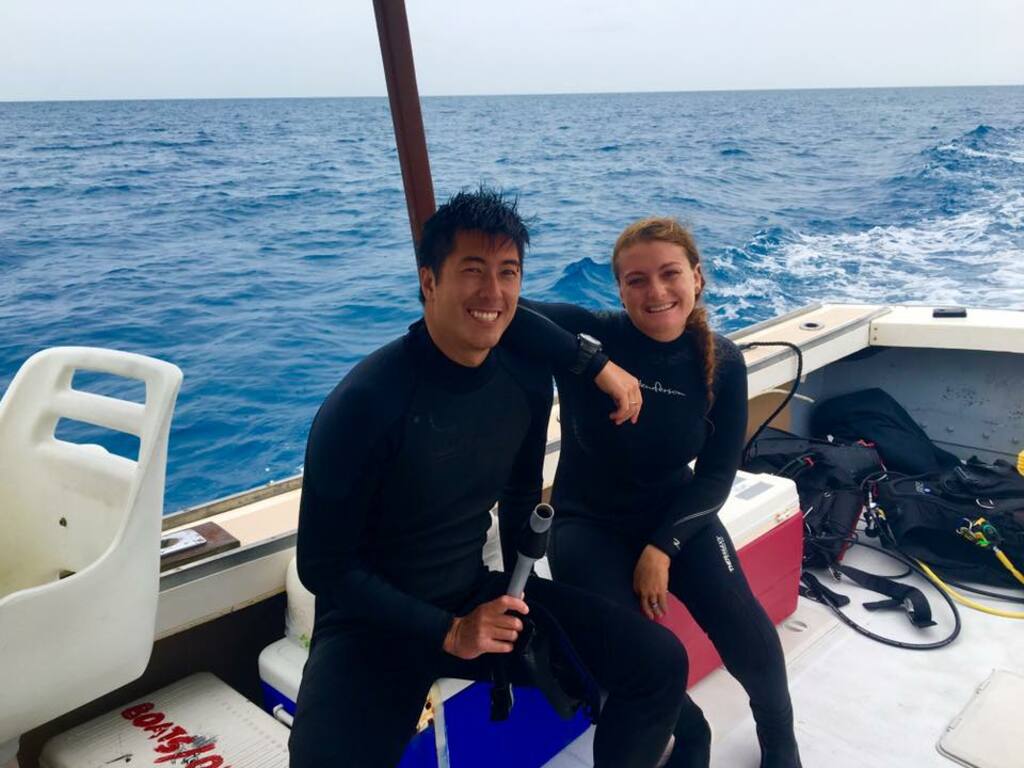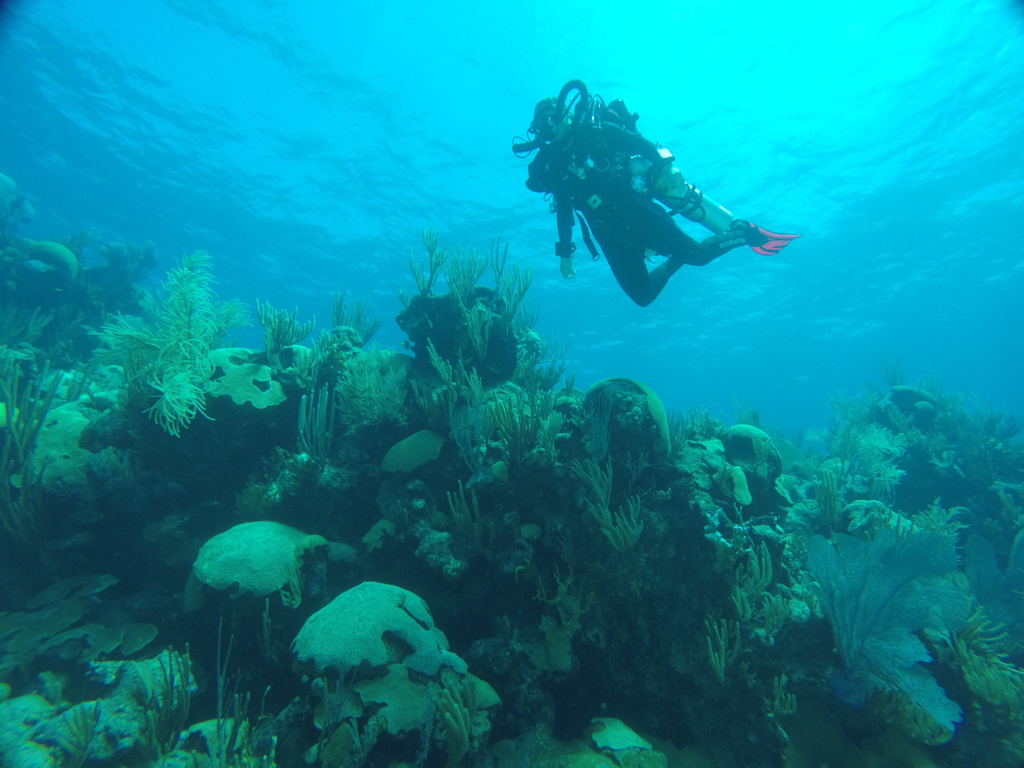Behind the science:
Reproductive ecology and early life history traits of the brooding ...
2018, April 3
Posted by Veronica Radice
Fields
Ecology
Reproduction
Focusgroups
Scleractinia (Hard Corals)
Locations
Bermuda
Platforms
SCUBA (open-circuit or unspecified)
“Early life history traits and reproductive ecology of brooding coral across depth gradient”
What was the most challenging aspect of your study (can be anything from field, lab to analysis)?
I would have to say the most challenging aspect was organizing the larval samples to ensure that as many analyses as possible were conducted based on the number of larvae that were released and also ensure equal sample sizes. This required a lot of communication between the team members and a clear plan for each day that larvae were released.
What was the most memorable moment in undertaking this study?
For me there were two memorable moments. The first was when we realized that the larvae from the mesophotic corals were performing better than those from the other sites. It was the opposite of what we expected and we were all very excited! The second was when we descended onto the deep site and were surround by about 10, 3-5 ft long black grouper who followed us around as we collected colonies.
What was your favorite research site in this study and why?
The mesophotic site, of course. Any day I am able to spend in an MCE is a good day. There is always something new to note, a species I didn't expect, a different behavioural observation, etc. The exploratory nature of working in the mesophotic is really what excites me about my research.
Other than your co-authors, with whom would you like to share credit for this work?
I have to share credit with my dive partner/mentor, Alex Chequer. He is responsible for coordinating all of the deep diving that happens in my lab and we couldn’t have done this work without him.
Any important lessons learned (through mistakes, experience or methodological advances)?
If I had to do this project over again I would want to incorporate survey data. We still know so little about species distributions at these depths and it would have been helpful to have that information. Of course, I would like to increase the sample size, but for that I need a bigger team, as we certainly had our hands full with this experimental design. So, lesson learned would have to be time management and knowing when your expectations exceed your logistical capabilities.
Can we expect any follow-up on this work?
Of course! As with any project, this work has opened up an entire new line of inquiry. We are already working on the next stage to this project, so stay tuned for more exciting data from Bermuda MCEs.
Featured article:
|
|
Reproductive ecology and early life history traits of the brooding coral, Porites astreoides, from shallow to mesophotic zones | article Goodbody-Gringley G, Wong KH, Becker DM, Glennon K, de Putron SJ (2018) Coral Reefs 37:483-494 |
|



